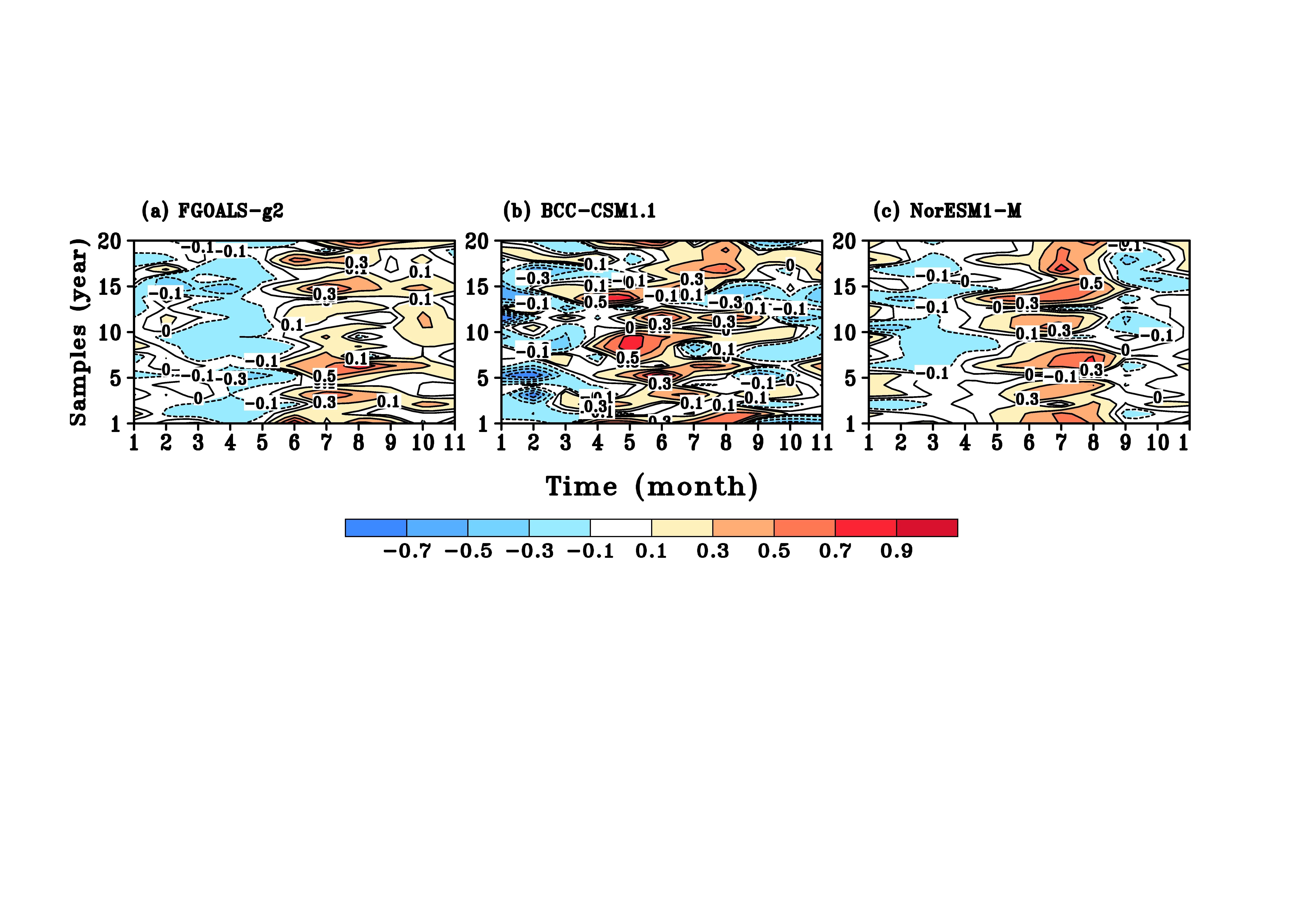State Key Laboratory of Numerical Modeling for Atmospheric Sciences and
Geophysical Fluid Dynamics (LASG)
Institute of Atmospheric Physics, Chinese Academy of Sciences

Vol. 6/No.6 July 2018
[Climate predictability] Predictability of El Niño-Southern Oscillation Events
Significant progress has been made in El Niño-Southern Oscillation (ENSO) theory and predictions over the years, and ENSO has become the most successful phenomenon in short-term climate prediction. However, there still exist large uncertainties in ENSO prediction, especially the prediction of so-called Central Pacific-El Niño (CP-El Niño) remains a challenge. Thus, estimating prediction uncertainties caused by initial errors or model errors, or both, is essential to improve the accuracy of ENSO predictions. Great efforts on ENSO predictability have been done for improving ENSO prediction skill.
Recently, Profs. Duan Wansuo and Mu Mu summarized the international studies of ENSO predictability within the framework of error growth dynamics and reviewed the results and present them in an article. The article mainly covers (a) the advances in methods for studying ENSO predictability, especially those of optimal methods associated with initial errors and model errors; and (b) the applications of these optimal methods in the studies of “spring predictability barrier” (SPB), optimal precursors for ENSO events (or the source of ENSO predictability) and target observations for ENSO predictions. In this article, some of major frontiers and challenges remaining in ENSO predictability were addressed. 
Fig.1 This figure is adapted from Zhang et al. (2015) and illustrates the ensemble mean of the monthly growth rates of prediction errors of the Niño-3.4 SST for El Niño events in one 20-year SST time series derived from (a) the FGOLAS-g2 (Flexible Global Ocean-Atmosphere-Land System model, Grid-point Version 2, (b) the BCC-CSM1.1 (The Beijing Climate Center Climate System Model), (c) the NorESM1-M (Norwegian Climate Center's Earth System Model). Here, the vertical axes denote the samples of initial errors; the contour lines represent the monthly growth rates of the increase (or decrease) of prediction errors, where the positive (negative) values indicate the growth (decrease) of the prediction errors. The growth rate of prediction errors in a given month was evaluated by subtracting the prediction error in this month from that in the last month. These figures show a phenomenon that ENSO forecasting has a large prediction error; in particular, prominent error growth occurs during the spring when the prediction is made before the spring. This phenomenon is the spring predictability barrier for ENSO forecasting.
Citation:
Predictability of El Niño-Southern Oscillation Events. Wansuo Duan, Mu Mu, Oxford Research Encyclopedia of Climate Science, 2018. doi:10.1093/acrefore/9780190228620.013.80
Contact: DUAN Wansuo, duanws@lasg.iap.ac.cn
E-mail: lasg_newsletter@lasg.iap.ac.cn
Editors: Chuanyi Wang (wangcy@lasg.iap.ac.cn), Kangjun Chen(ckj@lasg.iap.ac.cn)